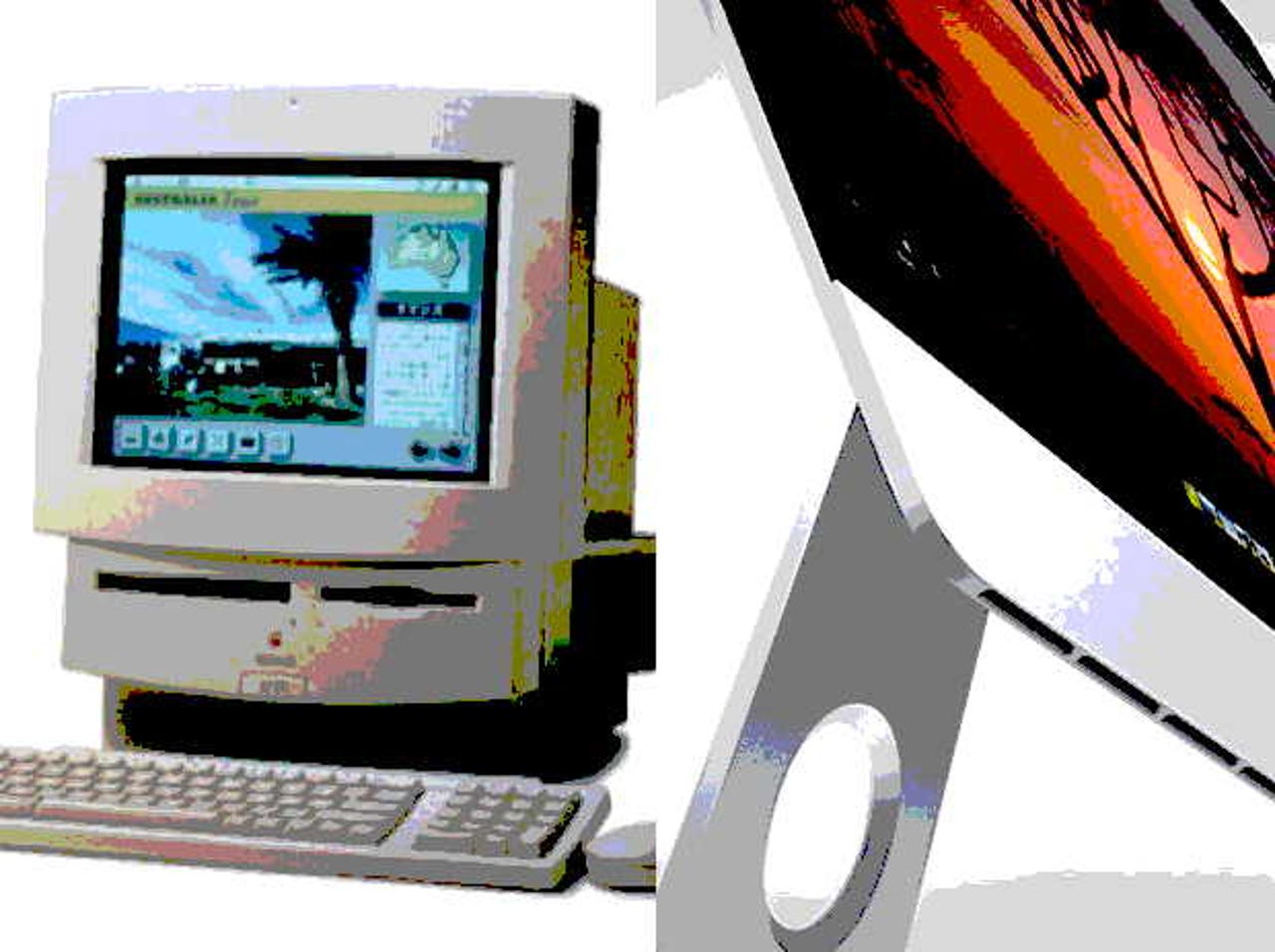Way-back Apple: A look at this week 20 years ago


Before there was Apple TV there was Mac TV. And long before movies came into our homes via the Internet, rich-media content distribution began with CD-ROM drives and computers. Both of these were top news stories 20 years ago this week in an issue of the MacWEEK newsweekly.
A front page 1993 story this week was how forthcoming desktop Macs would combine television viewing and computing. The story by senior editor Andy Gore was about the expected test marketing of Mac TV, a Mac CPU that came with a cable-ready tuner built-in.
Similar to the LC 520, the 32-MHz 68030-based system will have a built-in 14-inch Trinitron display that can act as the computer's screen or as a TV monitor.
In place of the microphone mounted above the LC 520's screen, Mac TV will have an infrared receiver that accepts input from a TV remote control, which will come with the machine, sources said. The back of the unit will reportedly include both coaxial and composite inputs for cable, antenna, VCR or laser disc.
In addition to acting as a TV set, Mac TV is a full-fledged Mac with space inside for a 160-Mbyte hard disk and CD300i drive. The unit features an LC-style processor direct slot, a 32-bit data bus and optional math coprocessor, sources said. However, the computer and TV functions are separate; Mac TV will not be able to capture video movies directly from the tuner.
Firstly, there are so many nostalgic hardware details in this story: The Mac LC 520 was an all-in-one box that Apple introduced in the summer of 1993, and here with the Mac TV model sported a faster 32-MHz processor and a 160-megabyte hard drive. Its screen had a resolution of 640 by 480 pixels. Note the megas: megahertz and megabyte, as well as the standard television resolution on a CRT display.
I will avoid the comparison to my iPhone, rather looking at Apple's current all-in-one model. The entry-level iMac comes with a 2.7-GHz 4-core processor with 4MB of L3 cache, a 1TB drive, and a 1920-by-1080-pixel flat panel screen. And nobody today needs a television tuner and cable connection.
Was this model an attempt to drive Macs and televisions into dorm rooms? Unlikely, at a cost of $2,000 ($3,237 in 2013 dollars according to the CPI inflation calculator). Still, all computers were expensive back then, so perhaps it was aimed at consumers and college students. My guess is that Mac TV was aimed at education markets where both televisions and computers were unusual equipment in the classroom. A two-fer.
Recently, there have been many rumors about a forthcoming Apple TV set. The latest reports say Apple next year will offer a 55- and 65-inch 4K television sets. These would presumably be offered alongside the current Apple TV set-top boxes.
In related news, Apple's current lines of AirPlay and Apple TV boxes came under patent attack last week, according to Patently Apple. The company with the claims is Aylus Networks, which offers video services to telecoms and "mobile service operators."
The Aylus Network complaint apparently is about Apple AirPlay delivering content to a device from a wide-area network. It's patent is about "digital home networks having a control point located on a wide area network" and describes a "method of controlling and delivering media content from a media server to a media renderer utilizing a wide area network." There are "user endpoint devices" in the mix. You can see the abstract text of the patent on Patently Apple.
Nowadays, when consumers are starting to abandon optical media for digital download, it's hard to imagine a time when CD-ROM drives and media were novel equipment. The Mac IIvx introduced in late 1992 was one of the first computers to come with a CD-ROM drive integrated into the case. About a year later, the drive was standard.
In a related story in the 1993 issue, MacWEEK reported on a speech by an Apple vice president to a user conference that the company would forgo $100 million in profits to help drive sales of CD-ROM-based multimedia.
Diery said the tactic is designed to boost the installed base of CD-ROM drives, thus increasing market demand for titles and applications. Apple expects to ship 1.2 million CD-ROM drives this year, up dramatically from 50,000 in 1992 and 7,000 in 1991, according to Diery.
Apple also announced it will team up with several hardware and software vendors to assemble "production station" bundles for multimedia developers and video editors. The bundles, due in January, are centered on Quadras. Apple has not settled on pricing.
Speaking of media content production stations: there's talk that Apple this week will ship its Mac Pro workstation with support for multiple 4K screens. It's the machine that will easily handle the creation of that 4K content for those future 4K Apple Television screens.
I expect to offer Way-back Apple as a semi-regular series. As with retrospectives on the "Best of..." television, movies or any other popular cultural genre, most such analysis only go back so far. With Apple, the outer limit appears to be the January, 2001 introduction of the original iPod. However, many Apple strategies have roots in the company's experiences in the 1990s and before. The stories are mostly from MacWEEK issues from 20 years ago. MacWEEK was the trade publication covering the professional Apple markets in the late 1980s and 1990s.